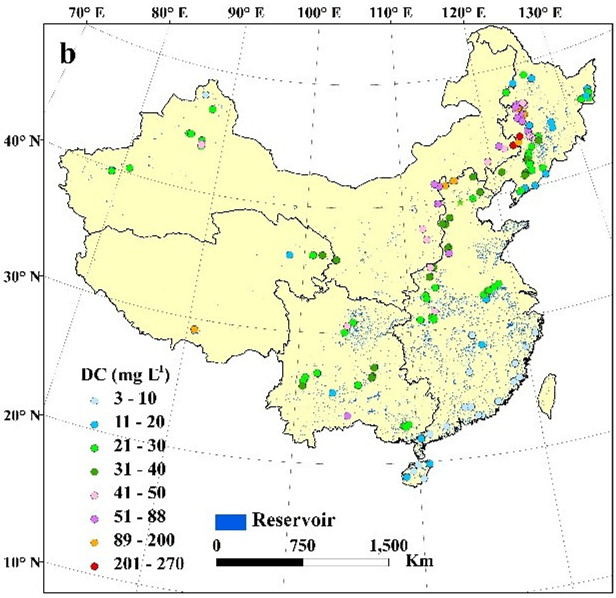Although inland water bodies occupy a small fraction of the earth’s surface, they play a major role in the global carbon cycle. The predominant terrestrial carbon input to most inland water is dissolved carbon (DC). In general, the concentration and constituent of DC in aquatic systems mainly influenced by trophic status, catchment environment, and the human activities. Spatial DC measurements are useful for understanding carbon sources and cycling in aquatic systems.
Numerous investigations have been carried out to examine the variations in DC in inland waters. However, investigations of DC patterns are imbalanced with respect to geography. Fewer investigations have been undertaken to investigate DC variation for inland waters in China. China contains a large number of inland water bodies which have a wide variation in water quality, a systematic examination of DC characteristics in inland water bodies in China is urgently needed.
A study led by Prof. SONG Kaishan from the Northeast Institute of Geography and Agroecology of the Chinese Academy of Sciences described for the first time a DC data set collected by field surveys undertaken in lakes and reservoirs across mainland China. The study was published online in Scientific Data.
The study provided a dissolved carbon (DC) data set, including dissolved organic carbon and dissolved inorganic carbon, from 288 lakes across five lake regions, and 141 large reservoirs spanning complex topography, landscape, hydrology, eutrophic status, and salinity. Results indicated that DC in lakes was significantly higher than DC in reservoirs. DC in saline water bodies were much higher than those in fresh water bodies. Eutrophic water bodies exhibited higher DC concentrations than mesotrophic and oligotrophic water bodies. All data used in this investigation is accessible online.
The pattern of the spatial distribution of DC in inland water benefits further investigations for carbon cycling, it has the potential impact on the global carbon cycle. “The results provided the important supplemental data to global carbon pool, and it helped in fully understanding the carbon cycle of terrestrial ecosystems.” said Dr. WEN Zhidan, first author of the paper.
The study entitled “A national-scale data set for dissolved carbon and its spatial pattern in lakes and reservoirs across China” has been published online in Scientific Data.
Contact:
Prof. SONG Kaishan, Ph. D
Northeast Institute of Geography and Agroecology, Chinese Academy of Sciences, Changchun 130102, China
Tel: 86-431-85542364
E-mail: songks@iga.ac.cn


Spatial pattern of dissolved carbon in lakes and reservoirs in mainland of China